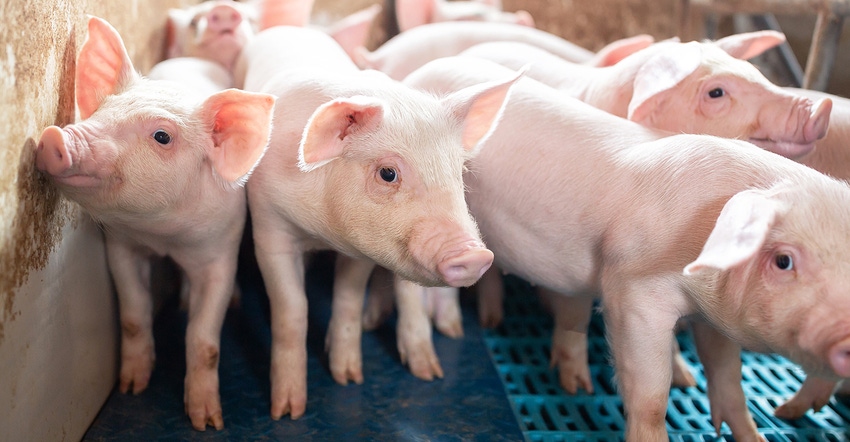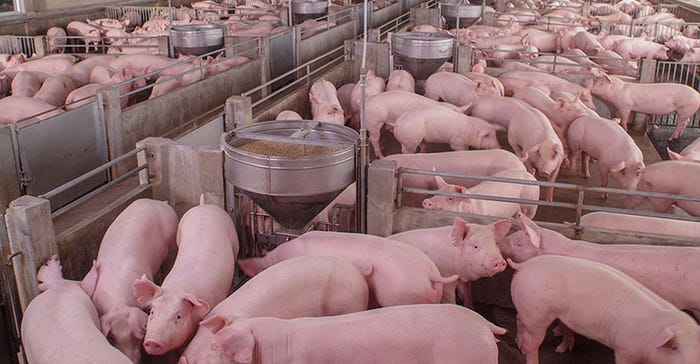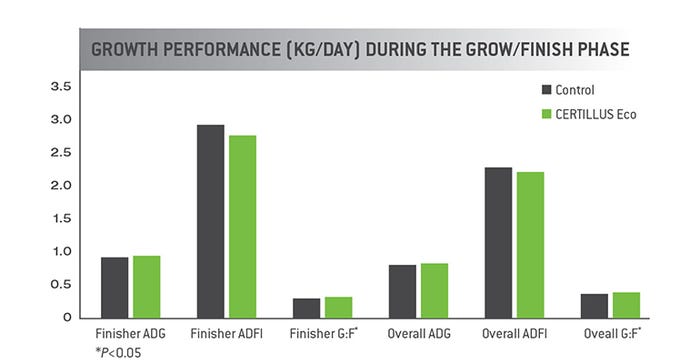Controlling odors has become a necessity as consumer and regulatory pressures rise. Learn how microbial feed additives can help producers meet these demands.

Sponsored Content
Odors have always been a natural part of any hog farm's daily operation. As urban sprawl continues reaching closer and closer to farmland, it's an obstacle the industry must continue to combat. Consumers, including juries, neighbors and shoppers, have high expectations of the swine industry, including finding solutions to lessen environmental impact such as odors and pollution.

Hog farm odor regulations.
In the U.S. almost every state has regulations that limit odors from animal feeding operations. While most are indirect regulations, they include several methods that affect hog farmers.
Setbacks.
Defined as the minimum distance from a property line that a building can be erected, setbacks range from 50 ft. to 16,000 ft. and are present in 20 states. They differ based on source type, type of receptor and size of the farm.Permits.
One of the most common regulations, registering the operation or obtaining some other type of permit is required in 41 states.Public comment periods.
21 states allow some type of public involvement, while several have enacted public comment periods.Operator training.
In 15 states, owners and operators applying manure must have proper training.Land application training.
Similarly, 20 states require training on when, where and how to apply manure to the land.
Manure management plan.
Taking steps to stay environmentally friendly is one of the best ways to protect your business, starting with a thorough manure management plan review. While there are several ways to reduce hog farm odors, they range in efficacy and economic viability.
Diet modifications.
For years, producers have tried to reduce odors by formulating hogs' diets to minimize excess nutrients. An advanced way to control odors is by harnessing the microbial populations that break down manure solids in the pit. Most manure odors are caused by improper fermentation and an imbalance of bacteria in the storage system that leads to accumulation of volatile fatty acids.
Feeding CERTILLUS™ Eco to pigs delivers beneficial bacteria directly to the pit through the manure. By improving microbial fermentation of manure, CERTILLUS Eco reduces odor-causing VFAs and improves fertilizer value of manure, all while improving feed efficiency by 5% in the finisher phase and 3% overall.


Unlike pit additive alternatives that require agitation and mixing to distribute within the storage system, CERTILLUS Eco is already evenly distributed in the manure itself.
Manure injection.
Injecting manure below the soil surface instead of broadcasting it can greatly reduce odors. In most states, producers will need to incorporate this as part of their nutrient management plan as it also helps prevent run-off and erosion. CERTILLUS Eco may also aid manure injection by improving viscosity.
Cover it up.
Permeable and impermeable covers help prevent gases from escaping manure storage. Straw, cornstalks and geotextiles can reduce odors by 40-50% and cost up to $0.25/sq. ft. Impermeable covers like high-density polyethylene show greater reduction in odors but cost in the $1-1.40/sq. ft. range and require snow and rain accumulation management. Additionally, masking agents added to the pit may hide odor symptoms but do not address the true problem of microbial fermentation failure.
Start today.
Reducing the odors from the manure pits on today's hog farms has become a necessity as pig productivity and consumers' environmental concerns have increased simultaneously. For a personalized recommendation on solutions for these unique challenges, contact the Swine Team at ARM & HAMMER™.
© 2020 Church & Dwight Co., Inc. ARM & HAMMER, the ARM & HAMMER logo and CERTILLUS are trademarks of Church & Dwight Co., Inc.
About the Author(s)
You May Also Like



